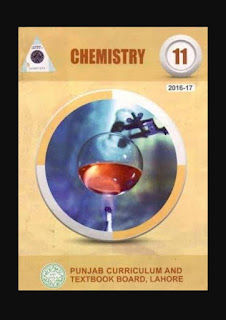If you are in 1st year class
SOLIDS
INTRODUCTION & PROPERTIES
1. What are amorphous and crystalline solids. Write their properties
2. How crystalline solids can be changed into amorphous solids?
3. What are crystallites?
4. What is cleavage plane & anisotropy?
5. Why graphite is conductor parallel to the layer only?
6. Define symmetry Name symmetric elements
7. What is habit of a crystals. How Cubic habit of NaCl can be changed?
8. Define isomorphism why it is possible
9. Define polymorphism with examples.
10. What is allotropy and transition temperature.
CRYSTALS AND THEIR CLASSIFICATION
11. What is crystal lattice and lattice sites
12. What is unit cell. Write its properties
13. What are crystallographic elements (unit cell dimensions)?
IONIC SOLIDS
14. Why ionic crystalline solids have high melting and boiling points?
15. Why NaCl and Csf have same geometry?
16. Why ionic compounds have formula mass and not the molecular mass?
17. Write properties of ionic solids.
18. Define lattice energy why it decreases by increasing size of cation or anion?
COVALENT SOLIDS
19. What are covalent solids. Classify them
20. Why covalent solids have open structure?
21. Why covalent solids are non-conductor?
22. Write about the solubility of covalent solids
23. Write properties of covalent solids
MOLECULAR SOLIDS
24. What are molecular solids. Give examples. Which type of forces are present among them?
25. Why molecular solids are soft and easily compressible?
26. Write properties of molecular solids
27. What is dry ice. Mention the type of solid to which it belongs?
METALLIC SOLIDS
28. What is electron gas theory?
29. What is band theory?
30. Why metals are good conductor of heat and electricity?
31. Why metals are malleable and ductile
32. Why metals show luster?
33. What are crevices or voids?
34. Explain cubic close packing and hexagonal close packing in the structure of metals
LIQUIDS
INTERMOLECULAR FORCES
1. What are intermolecular (vander waals) forces? Write their names
2. Intermolecular forces are weaker than intramolecular forces. Give reason
3. Define dipole-dipole forces. On what factors these forces depends?
4.What is effect of dipole-dipole forces on thermodynamic properties of a compound?
5. What is dipole-induced dipole (Debye) force?
6. Dipole-dipole forces are stronger than London dispersion forces
7. What are London forces. Which type of compounds have these forces?
8. Define polarizability
9. I2 is solid while F2 is gas at room temperature? (B.P of halogens increase down the group)
10. Why boiling point of noble gases increase down the group?
11. Why boiling point of hydrocarbons increase with increase in no. of carbon atoms?
HYDROGEN BONDING
12. What is Hydrogen Hydrogen bonding? How it is different from simple dipole-dipole interaction?
13. Explain hydrogen bonding in chloroform and acetone
14. Why HF is weak acid than other halogen acids?
15. Why CH4 has low boiling point?
16. Why water has higher boiling point than HF?
17. Water is liquid while H2S is gas at room temperature. Justify
18. Why alcohols and carboxylic acids are water soluble while hydrocarbons are water insoluble
(Is it true that polar compounds are soluble in polar solvents) (Why water and ethanol can mix in all proportion)
19. Ice floats on the surface of water. Justify
20. Water freeze from surface to downward direction in ponds and lakes. Justify
21. How fish and plants survive in cold areas under the blanket of ice? (Low density of ice has good significance)
22. How soap perform cleansing action?
EVAPORATION & BOILING POINT
23. Define evaporation. On what factors it depends?
24. Define vapor pressure On what factors it depends?
25. What is effect of temperature on vapor pressure. Explain with example
26. The vapor pressure of solid is far less than that of liquid. Give reason
27. Define boiling point & molar heat of vaporization
28.What is effect of external pressure on boiling point
29. Why things are cooked easily in pressure cooker
30. What is vacuum distillation. Write its advantage
31. Define molar heat of fusion and molar heat of sublimation
32. Why molar heat of sublimation and vaporization is greater than molar heat of fusion?
LIQUID CRYSTALS
33. How liquid crystals were discovered
34. What are liquid crystals. Write their properties
35. Write use of liquid crystals in skin thermography (Medical use of liquid crystals)
36. Write two applications of liquid crystals
37. How liquid crystals act as temperature sensors?



Comments
Post a Comment